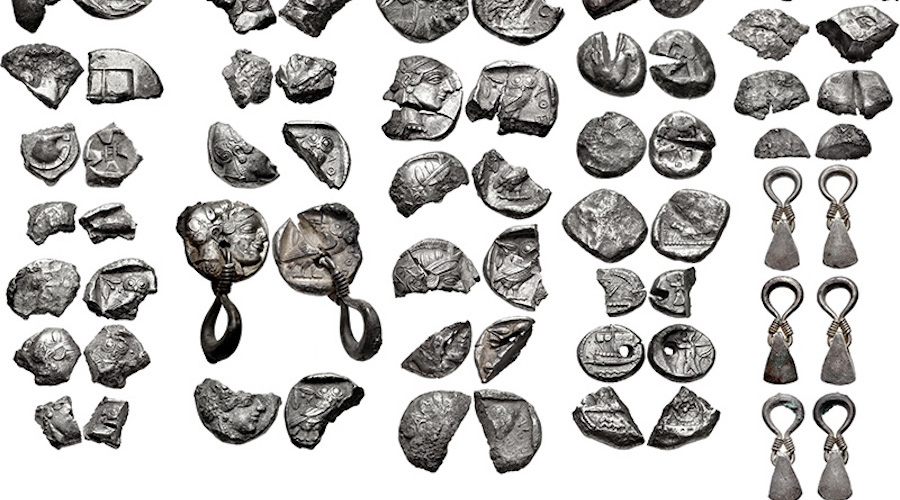Mediterranean silver was likely traded during the Trojan War, the founding of Rome
[ad_1]
In a presentation at the Goldschmidt Conference organized by the Washington Geochemical Society, the researchers said they used high-precision isotope analysis to identify the ore sources of tiny traces of lead in hacked silver.
Hacked silver is an irregularly cut silver bar with shards of silver bars and jewelry, which was produced in the southern Levant from the beginning of the second millennium to the fourth century BC. BC served as a means of payment. Its value has been used in local and international transactions by being weighed on scales against standardized weights.
Previous reports of archaeological digs indicated that hacked silver was usually stored in ceramic containers and that it had to be imported as silver could not be mined in the Levant.
Based on this information, Liesel Gentelli’s team from the École Normale Supérieure de Lyon, France, analyzed hacked silver from 13 different sites from 1300 BC.
Most of the hacked silver from the 1300 BC period BC to 586 BC BC came from the southern Aegean and the Balkans. It has also been found that some of them even come from Sardinia and Spain
The samples contained finds from “En Gedi, Ekron and Megiddo” (also known as Armageddon). They have compared their finds with ore samples and have shown that most of the hacked silver comes from the southern Aegean and the Balkans (Macedonia, Thrace and Illyria). It has also been found that some of them even come from Sardinia and Spain.
“Former researchers believed that the silver trade ended after the social collapse at the end of the Late Bronze Age, but our research shows that exchanges, particularly between the southern Levant and the Aegean world, never came to a standstill,” said Gentelli. “The people around the eastern Mediterranean stayed connected. It is likely that the silver flowed into the Levant through trade or pillage. “
According to the scientist, the periods of silver shortage occurred around the time of the transition from the Bronze to the Iron Ages, around 1300-1100 BC because of the lack of the gray metal.
“We cannot compare our results on the silver trade with specific historical events, but our analysis shows the importance of the hacked silver trade from before the Trojan War, which some scholars dated from the early 12th BCE to the end of the Iron Age in 586 v. BC, marked by Nebuchadnezzar’s destruction of Solomon’s temple in Jerusalem, â€stressed Gentelli.
The researcher also said that after these events there was a gradual introduction of coinage, first as several archaic coins found and later a transition to a monetary economy in the southern Levant around 450 BC.
“However, this work shows the enduring and crucial economic role that hacked silver played in the economy of the Bronze and Iron Ages,” he said.
[ad_2]

